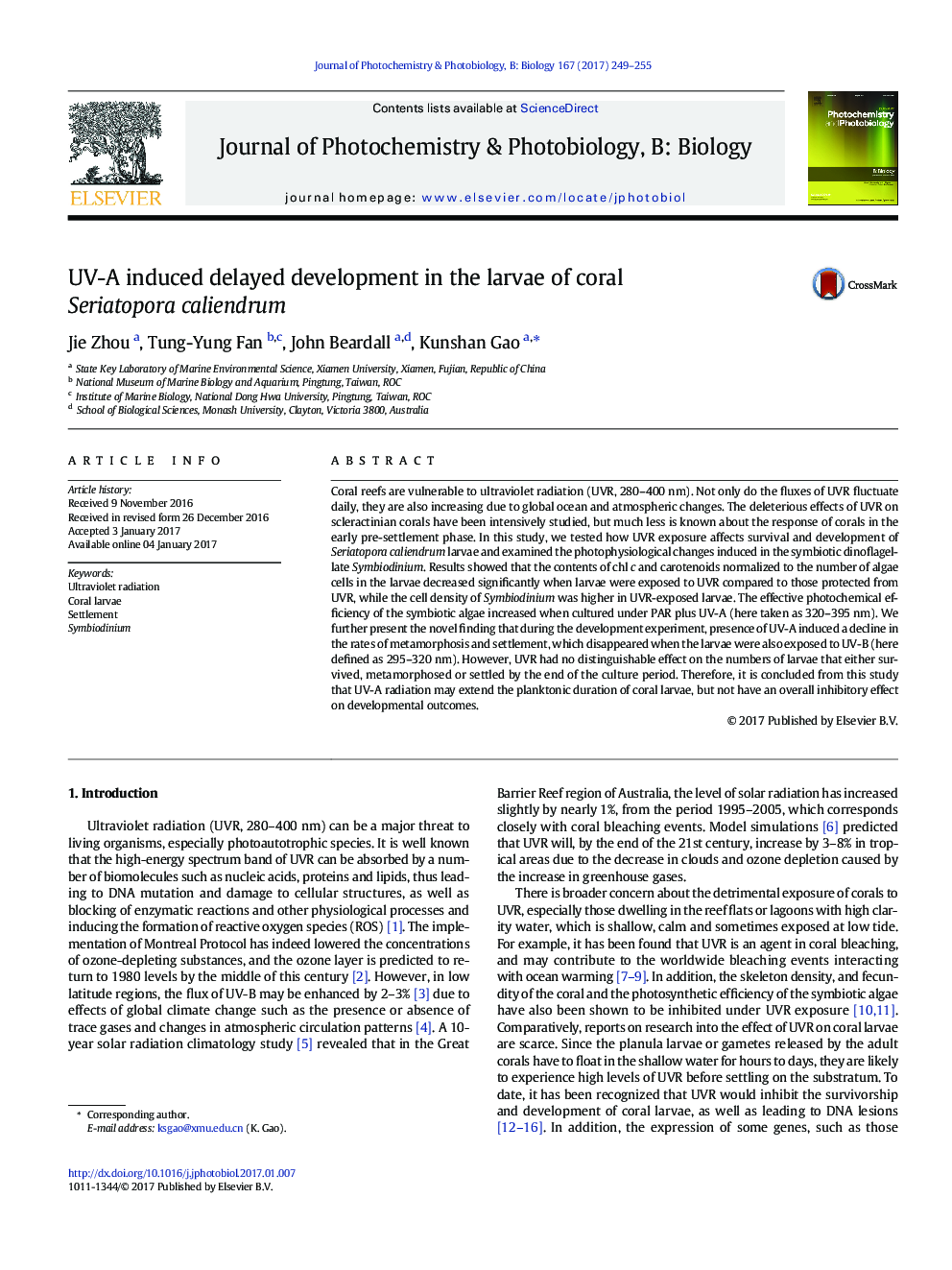| Article ID | Journal | Published Year | Pages | File Type |
|---|---|---|---|---|
| 4754724 | Journal of Photochemistry and Photobiology B: Biology | 2017 | 7 Pages |
Abstract
Coral reefs are vulnerable to ultraviolet radiation (UVR, 280-400Â nm). Not only do the fluxes of UVR fluctuate daily, they are also increasing due to global ocean and atmospheric changes. The deleterious effects of UVR on scleractinian corals have been intensively studied, but much less is known about the response of corals in the early pre-settlement phase. In this study, we tested how UVR exposure affects survival and development of Seriatopora caliendrum larvae and examined the photophysiological changes induced in the symbiotic dinoflagellate Symbiodinium. Results showed that the contents of chl c and carotenoids normalized to the number of algae cells in the larvae decreased significantly when larvae were exposed to UVR compared to those protected from UVR, while the cell density of Symbiodinium was higher in UVR-exposed larvae. The effective photochemical efficiency of the symbiotic algae increased when cultured under PAR plus UV-A (here taken as 320-395Â nm). We further present the novel finding that during the development experiment, presence of UV-A induced a decline in the rates of metamorphosis and settlement, which disappeared when the larvae were also exposed to UV-B (here defined as 295-320Â nm). However, UVR had no distinguishable effect on the numbers of larvae that either survived, metamorphosed or settled by the end of the culture period. Therefore, it is concluded from this study that UV-A radiation may extend the planktonic duration of coral larvae, but not have an overall inhibitory effect on developmental outcomes.
Related Topics
Physical Sciences and Engineering
Chemical Engineering
Bioengineering
Authors
Jie Zhou, Tung-Yung Fan, John Beardall, Kunshan Gao,
